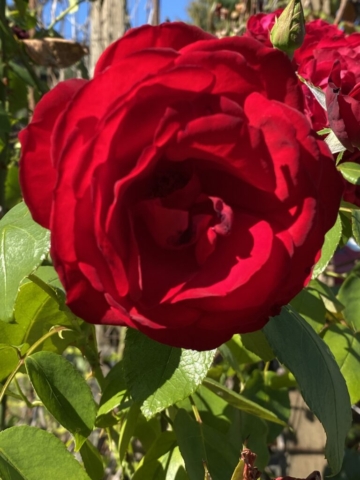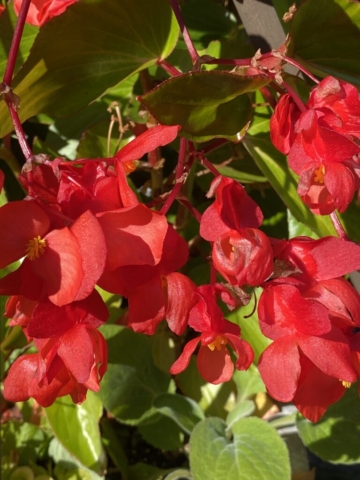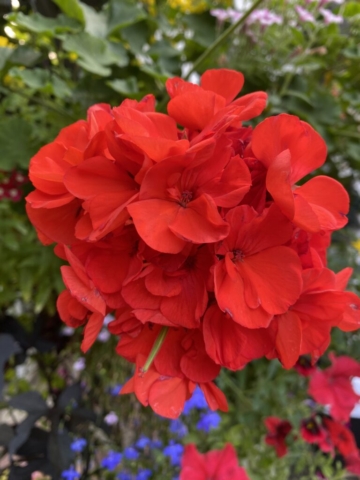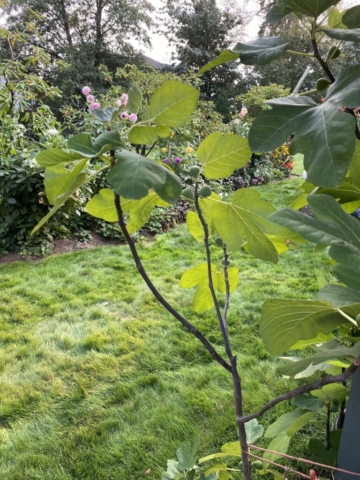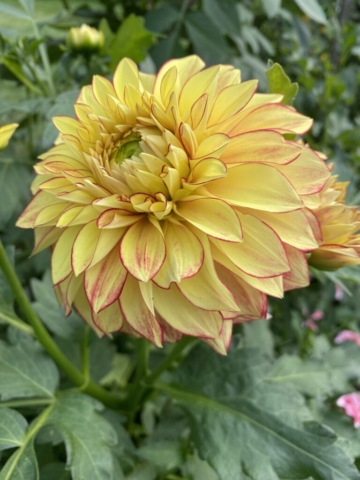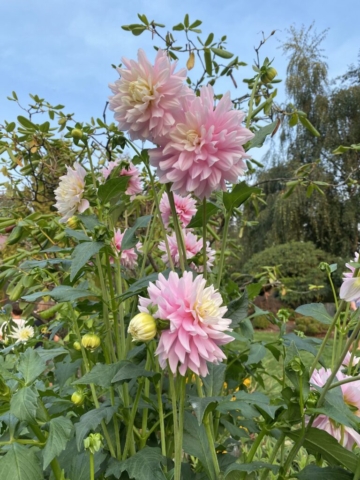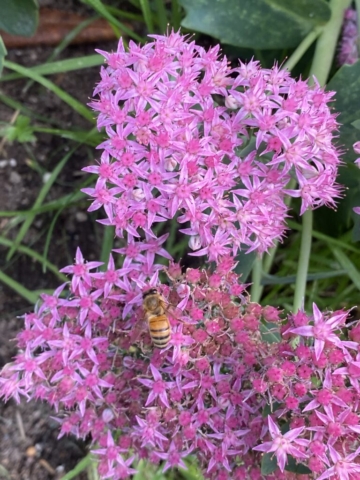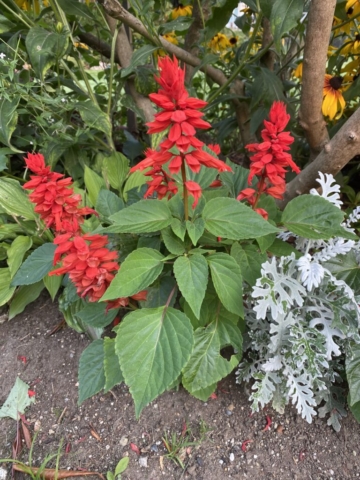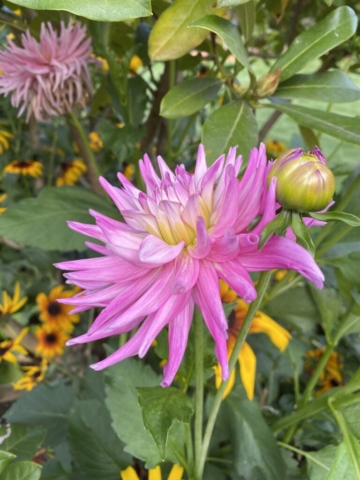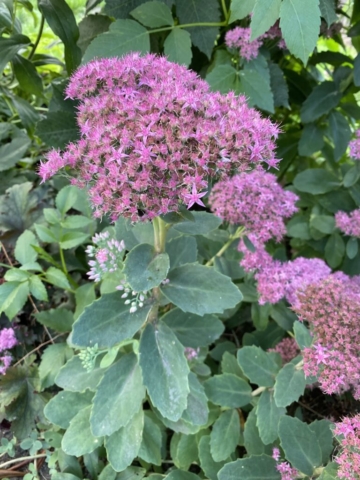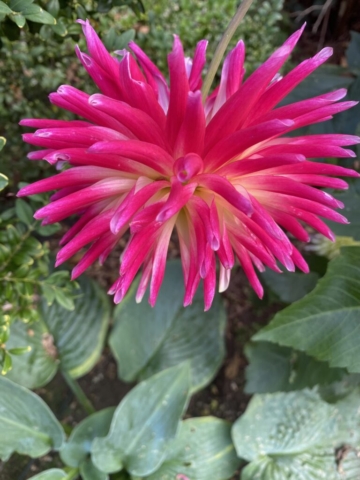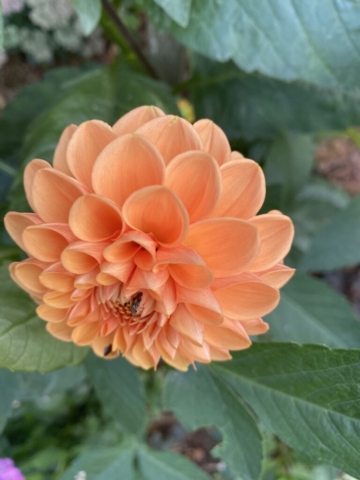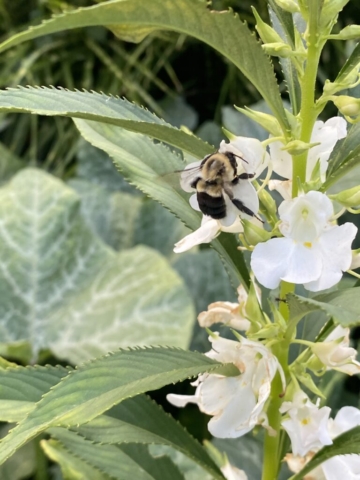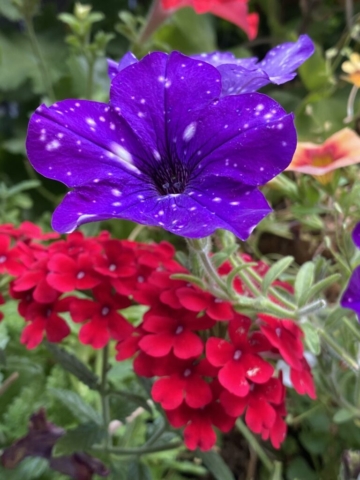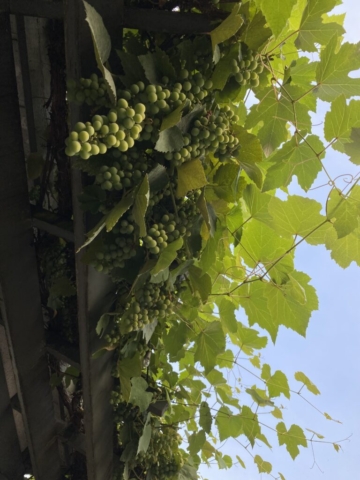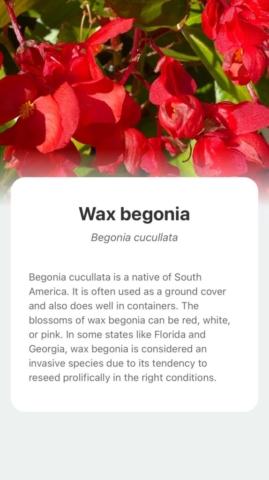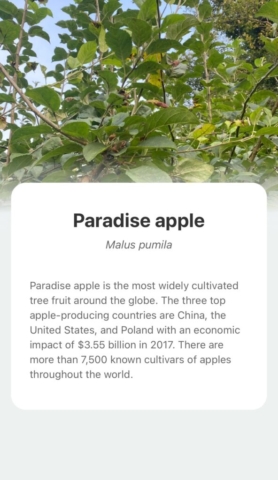Garden blooms
Wax begonia
Begonia cucullata
Begonia cucullata is a native of South America. It is often used as a ground cover and also does well in containers. The blossoms of wax begonia can be red, white, or pink. In some states like Florida and Georgia, wax begonia is considered an invasive species due to its tendency to reseed prolifically in the right conditions.
Tea rose
Rosa hybrida
The first tea rose was created in 1867 by Jean-Baptiste Andred Guillot, who operated his father’s nursery in Lyon from the age of 14. The tea rose did not become popular until the Soleil d’Or was cultivated at the beginning of the 1900s in France.
Zonal geranium
Pelargonium hortorum
Zonal geranium (Pelargonium hortorum) is an annual plant species that looks similar in appearance to other geraniums. The zonal geranium can be distinguished by its zone of red, blue or purple striping through the middle of the leaf. This species is typically a one-season bloomer, unlike other geraniums that are perennial growers and bloom year round. Zonal geranium blooms come in a variety of colors that include red, pink, burgundy, salmon and white
Bigleaf hydrangea
Hydrangea macrophylla
The bigleaf hydrangea is a deciduous shrub native to Japan, and is known for its lush, oval, colorful inflorescence. The two types of Hydrangea macrophylla are mopheads – with large, ball-shaped, sterile flower clusters, and lacecapes – with small round fertile flowers in the center, and sterile flowers on the outer side of each inflorescence. Depending on soil pH, blooms can change color from pink to blue.
Common fig
Ficus carica
Ficus carica, colloquially known as the common fig, is a deciduous small tree or shrub widely known for its sweet, chewy fruits. This shrubby plant has a very, very long cultivation history. The earliest evidence of its cultivation was found in the Jordan Valley and go all the way back to the tenth millennium BC.
Garden dahlia
Dahlia pinnata
The garden dahlia is a common spring flower that comes in a wide range of colors. The flowers themselves are unscented and attract pollinators (like bees) using only their bright coloration. Garden dahlia plants were grown by ancient Aztecs and it is now the official flower of Mexico. It is genetically related to garden plants like sunflowers and zinnias.
Black-eyed susan
Rudbeckia hirta
The black-eyed susan is a flowering black and yellow plant with curving leaves. It is culturally important in the Southern U.S., and is often used to attract butterflies to gardens. It long ago spread throughout North America and much of the world. Black-eyed susan is the state flower of Maryland and was important in the history of the University of Southern Mississippi.
Showy stonecrop
Hylotelephium spectabile
Showy stonecrop (Hylotelephium spectabile) is a perennial succulent native to China and Korea. Showy stonecrop is often cultivated as ground cover and valued for its drought tolerance. This species used to be classified as *Sedum spectabile, *and is also commonly known as butterfly stonecrop.
Scarlet sage
Salvia splendens
Scarlet sage (Salvia splendens) is a perennial herb native to Brazil. Its many small flowers are shaped such that hummingbirds and butterflies are the most common visitors. Scarlet sage is often cultivated ornamentally for decor, and it has become a mainstay in indoor flowerbeds such as those in shopping malls.
Paradise apple
Malus pumila
Paradise apple is the most widely cultivated tree fruit around the globe. The three top apple-producing countries are China, the United States, and Poland with an economic impact of $3.55 billion in 2017. There are more than 7,500 known cultivars of apples throughout the world.
Garden phlox
Phlox paniculata
The garden phlox is a flowering plant that is native to the United States. The name, phlox, comes from the Latin for “flame,” reflecting its bright colors. Garden phlox flowers can become important food sources for insects and hummingbirds.
Chinese silver grass
Miscanthus sinensis
Chinese silver grass is a perennial grass that can grow 91 to 213 cm. It forms dense clumps from an underground rhizome. The chinese silver grass is grown mainly as an ornamental grass, with silvery leaves and flowers that vary in color based on the cultivar. Be careful where you plant this type of grass; in some zones it can become invasive.
Garden balsam
Impatiens balsamina
Garden balsam has been a favorite for European gardens since the Victorian era, although its flatter-flowered cousin has become increasingly more popular. The garden balsam attracts pollinators as well as nectar-feeding birds. The genus name, “Impatiens,” which means, “impatient,” references the plant’s tendency to explosively throw its seeds away from itself.
Scotch heather
Calluna vulgaris
Scotch heather (Calluna vulgaris) is an evergreen flowering shrub that produces hundreds of rose-pink to purplish-pink, bell-shaped flowers that bloom in late summer. Relatively low maintenance, it is perfect in rock gardens or used as a border or ground cover. It prefers acidic soil and will grow from 30 to 61 cm in full sun to partial shade.
Purple coneflower
Echinacea purpurea
Purple coneflower (Echinacea purpurea) is an herb native to North America that flourishes in prairie environments or open wooded areas. The purple coneflower makes a good addition to a flower bed or garden because its blooms last the whole summer and attract pollinators such as bees and hummingbirds.
Hardy fuchsia
Fuchsia magellanica
The vibrant colors and graceful shape of hardy fuchsia makes it a perfect choice to grace your garden. The hardy fuchsia is less sensitive to cold than other types of fuchsias, which means that this plant can go from containers or window boxes to permanent plantings along borders or as shrubs.
Wine grape
Vitis vinifera
Wine grape (Vitis vinifera) is a woody, fruit-bearing vine with a very long and vivid history of cultivation for culinary, recreational, and ritualistic purposes – most notably in winemaking. The earliest known evidence of domesticated wine grapes has been identified in Georgia, and carbon dating traces its domestic origins all the way back to 6000 BC. In addition to wine, the fruit of the wine grape is eaten in the form of grapes, raisins, and currants.
Garden petunia
Petunia atkinsiana
Garden petunia (Petunia atkinsiana) is a hybrid species of garden plant that describes all hybrids between the two petunia species P. axillaris and P. integrifolia. When grown for gardening, these flowers are relatively easy to grow, can survive in hot climates. Garden petunia require hours of sunlight each day.
Tea rose
Rosa hybrida
The first tea rose was created in 1867 by Jean-Baptiste Andred Guillot, who operated his father’s nursery in Lyon from the age of 14. The tea rose did not become popular until the Soleil d’Or was cultivated at the beginning of the 1900s in France.
